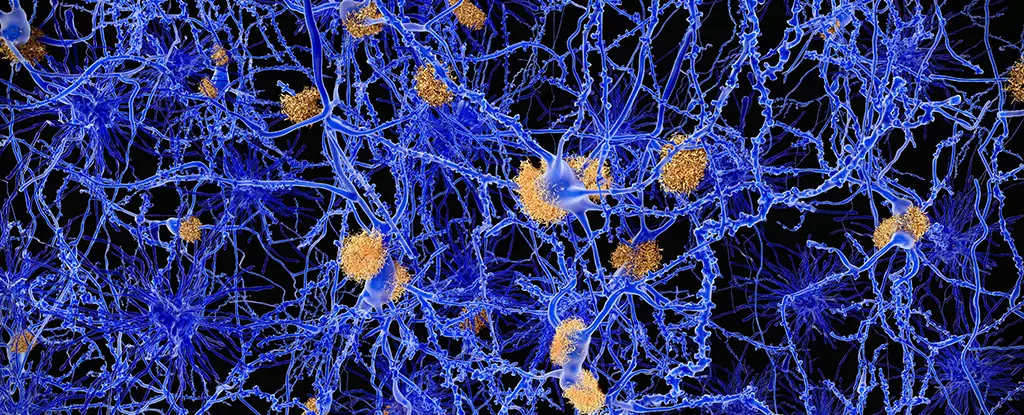The relentless decline wrought by Alzheimer’s disease has left countless families grappling with loss, not just of loved ones, but of memories, vitality, and independence. As mainstream medicine continues its often frustrating battle against neurodegenerative diseases, a novel approach is emerging that harnesses the profound potential of nanotechnology. Imagine a treatment capable of halting the creation of toxic protein clusters that damage neurons—this is exactly what a groundbreaking international research team has achieved through their innovative design of nanomaterials.
The scientific community has long understood that misfolded proteins play a pivotal role in advancing diseases like Alzheimer’s. By preemptively thrusting these troublesome amyloid beta proteins into a protective web, researchers have begun to challenge traditional narratives about treatment limitations. The revelation that tiny, specially designed particles can trap these misbehaving proteins before they aggregate into destructive plaques represents a paradigm shift. This isn’t merely an incremental step in treating a devastating condition; it is an exploration of the fundamental nature of biochemistry through the lens of innovation.
Understanding the Mechanism
At the crux of this promising exploration lies a sophisticated fusion of peptide amphiphiles—molecules known for their dual affinity for both lipids and water—and trehalose, a naturally occurring sugar renowned for its protective properties. This combination has proven fruitful, summoning the promise of reduced amyloidal toxicity. The significant aspect of trehalose is not just its presence; it recalibrates the interaction between the protein and its environment, making it less stable and more prone to interact harmlessly with the peptide amphiphiles. This synergy could hold the key to abstaining from the destructive pathways that lead to neuron death.
One particularly striking insight is that the process focuses on treating misfolded proteins at an early stage rather than combating established toxic fibers that have already wreaked havoc within the brain’s delicate ecosystems. This early intervention model offers hope that the trajectory of disease progression might be altered significantly. In essence, this technique serves as a “clean-up crew” that actively prevents neurotoxicities from even gaining a foothold.
Molecular Engineering: The Future of Treatment
As the world continues to grapple with the alarming increase in dementia diagnoses, with projections reaching ten million new cases annually, the urgency for effective treatments cannot be overstated. The research led by Samuel Stupp and his team does not merely offer a temporary fix—it represents the quest for a cure grounded in molecular engineering. The potential implications of their findings could ripple through the landscape of neurology, reshaping treatments from reactive to proactive approaches.
However, while we hold onto this newfound optimism, it is prudent to approach these developments with tempered enthusiasm. The research remains in its infancy; additional studies are crucial to understand how these engineered molecules will interact with human biology, particularly within the context of neurodegenerative diseases. While we can herald this innovative direction, we must also recognize the complexity of the human body and the nuances of individual responses to new treatments.
A Call for Continued Investment and Research
Historically, breakthroughs in medicine have often encountered steep obstacles—both scientific and financial. The continued pursuit of effective treatments for Alzheimer’s and other neurodegenerative diseases necessitates unwavering investment in research and development. The promise shown by these molecularly engineered nanomaterials should fuel a commitment to ongoing studies, testing, and eventual clinical applications. A robust collective commitment from governments, academic institutions, and pharmaceutical companies is essential to not only keep the momentum going, but also ensure that discoveries like this can transition from the lab to the bedside.
While we remain guarded about the implications of this research, the potential it holds for the millions affected by Alzheimer’s is both inspiring and urgent. The fight against neurodegeneration is far from over; rather, it is evolving into an era of innovation brimming with possibilities. We stand on the precipice of scientific revolution—a moment that might herald the dawn of a brighter future for those facing the harrowing grasp of neurodegenerative diseases.


Leave a Reply